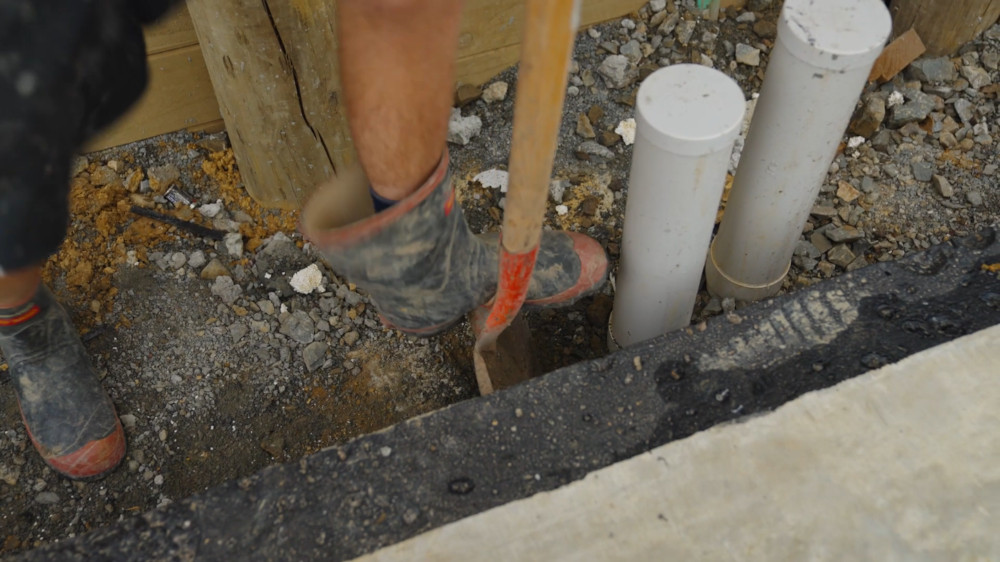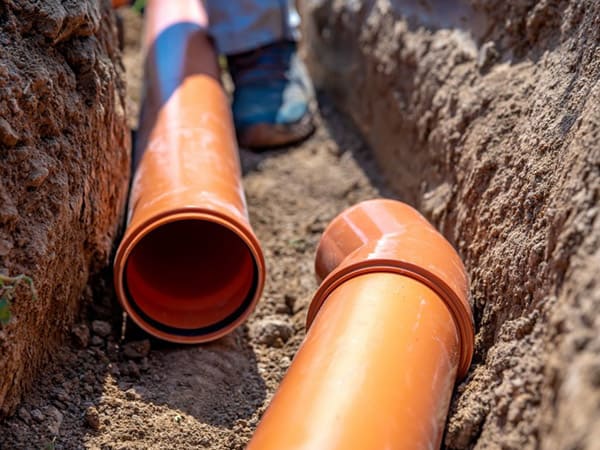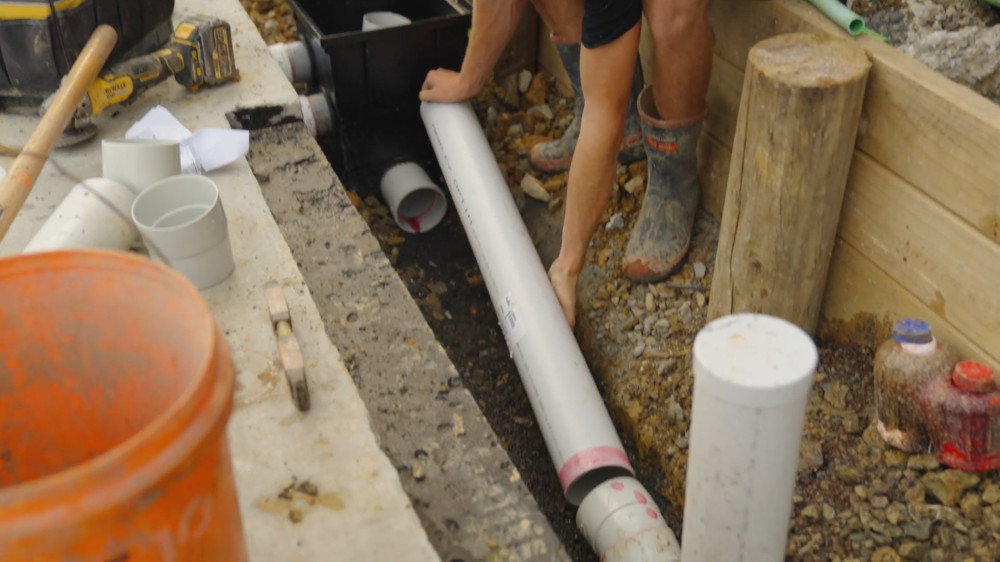Maintaining a well-functioning drainage system is essential for any homeowner, especially in a country like New Zealand, where heavy rains and storms are common. Properly maintained drainage systems can prevent costly repairs, minimize water damage, and improve your home’s overall safety and appearance. Here’s a comprehensive guide to help you keep your drainage system in top shape and ready to handle New Zealand’s unpredictable weather.
1. Understand Your Drainage System’s Components
Before diving into maintenance tips, it’s helpful to know the basic components of your home drainage system. In most New Zealand homes, drainage systems typically include:
- Gutters and downspouts: Direct rainwater off your roof and away from the foundation.
- Surface drainage: Channels that help direct surface water away from areas like driveways, patios, and gardens.
- Subsurface drainage: Pipes that manage groundwater and prevent water buildup.
- French drains: Gravel-filled trenches that help direct groundwater away.
- Sump pumps: Often installed in basements to remove accumulated water.
Each of these components requires its own set of maintenance practices to stay effective, and each plays a crucial role in safeguarding your property.

2. Regularly Inspect and Clean Your Gutters
Your gutters and downspouts are often the first line of defense against water buildup. Clogged gutters can cause water to overflow, leading to foundation erosion, basement flooding, and other water-related issues.
- Clear debris: Regularly remove leaves, twigs, and other debris that collect in your gutters, especially in autumn when foliage is most abundant.
- Flush gutters: Use a hose to flush out any residual debris, ensuring that water flows freely through the system.
- Secure loose gutters: Check for any loose brackets or sagging sections and make necessary repairs to keep everything securely attached.
Tip: Clean your gutters twice a year—once in autumn and once in spring—to ensure they remain free from blockages year-round.
3. Check Drainage Pipes for Blockages
Drainage pipes that run underground are essential for preventing water from pooling around your property. However, these pipes can sometimes become blocked, leading to water backup and potential property damage.
- Watch for signs of blockage: Slow drainage or standing water near drainage outlets may indicate a blocked pipe.
- Inspect periodically: Use a flashlight to check for visible debris around the inlet and outlet points.
- Use a plumbing snake or jetting service: For minor clogs, a plumbing snake can often dislodge debris, but for persistent blockages, consider calling professionals like Real Drainlayers for high-pressure water jetting.
4. Examine and Maintain Surface Drains
Surface drains help direct excess water away from driveways, patios, and other hardscaped areas. Without regular maintenance, they can become clogged and lead to water pooling.
- Clear grates and remove debris: Regularly remove dirt, leaves, and debris from surface drains to keep water flowing freely.
- Ensure proper grading: If water pools in areas near your drains, it may be a sign that the ground isn’t properly sloped. Consult a professional to adjust grading where necessary.
- Use a vinegar solution: Pouring a vinegar solution down surface drains can help break down minor blockages and prevent buildup.
Tip: Aim to inspect and clean surface drains every three months to avoid buildup, particularly after heavy storms or seasonal changes.
5. Maintain French Drains and Gravel Trenches
French drains are common in New Zealand homes, especially those on sloped or hillside properties. These drains require specific maintenance to keep them effective.
- Replace gravel periodically: Over time, gravel in a French drain can become compacted, reducing its ability to filter water effectively.
- Keep the area clear: Avoid planting trees or shrubs with aggressive roots near French drains, as roots can infiltrate and block the drainage system.
- Flush the system annually: Run water through the system to ensure it’s working correctly and clear out any minor clogs.
6. Ensure Sump Pumps Are Functioning Properly
If you have a sump pump installed in your basement, regular maintenance is crucial, as it helps prevent water from accumulating in low-lying areas of your property.
- Test the pump regularly: Pour a bucket of water into the sump pit to ensure the pump activates and drains the water efficiently.
- Check the power supply: Ensure your sump pump is connected to a reliable power source and, ideally, to a backup power option.
- Clean the pit: Periodically clean the sump pit to remove silt, debris, and any buildup that might obstruct the pump.
Tip: Test your sump pump at least once every three months, and always before an anticipated storm season.
7. Look for Signs of Erosion or Soil Displacement
Erosion can be a major issue in New Zealand, especially in properties located near slopes or coastal areas. A well-maintained drainage system can help prevent erosion, but periodic checks are essential.
- Inspect slopes: If you notice soil moving or eroding near sloped areas, it could indicate poor drainage.
- Check retaining walls: If you have retaining walls, make sure water isn’t collecting near the base, which can lead to erosion and structural issues.
- Add vegetation: Planting ground cover can help stabilize soil and reduce erosion on slopes, providing an added layer of protection.
8. Schedule Annual CCTV Drain Surveys
For a comprehensive check-up on your drainage system, consider having a CCTV drain survey done once a year. This advanced inspection can detect potential issues like cracks, blockages, and pipe misalignments that may not be visible through regular maintenance.
- Pinpoint issues early: A CCTV survey can identify cracks, roots, and other potential blockages before they escalate.
- Save on repair costs: By identifying minor issues early, you can avoid costly repairs later on.
- Get professional advice: Real Drainlayers offers expert advice following a CCTV survey, helping you understand any issues and their potential solutions.
9. Prevent Root Intrusion
Tree roots are one of the most common causes of blocked and damaged drainage systems. As they grow, roots naturally seek out moisture, which can lead them into your pipes.
- Plant carefully: Avoid planting trees and shrubs with invasive root systems near your drainage pipes.
- Use root barriers: Installing root barriers between trees and pipes can help prevent roots from infiltrating your drainage system.
- Trim nearby trees: Regularly trimming trees and shrubs around your drainage area reduces the risk of roots seeking out your pipes.
Tip: If you suspect root intrusion, reach out to a professional for a CCTV survey to assess and address the problem before it escalates.
10. Seek Professional Maintenance When Needed
While some maintenance tasks can be handled by homeowners, certain aspects of drainage maintenance are best left to professionals.
- Periodic jetting: High-pressure water jetting helps clear out stubborn debris, grease, and even minor root intrusion.
- Expert inspections: Professionals can detect early signs of damage that might not be visible to the untrained eye.
- Tailored solutions: Real Drainlayers offers expert drainage solutions tailored to the specific needs of New Zealand properties, ensuring your system stays effective and durable.
Final Thoughts
Keeping your drainage system well-maintained is essential for protecting your property and preventing costly repairs. By performing regular inspections, clearing blockages, and addressing any drainage issues as they arise, you can ensure your system functions efficiently year-round. Implementing these maintenance practices will not only help extend the lifespan of your drainage system but also give you peace of mind during New Zealand’s rainy seasons.
If you’re unsure about your drainage system’s condition or need professional assistance, Real Drainlayers is here to help. We offer a full range of drainage services, from CCTV surveys to high-pressure jetting and repair work. Contact us today to schedule a consultation and keep your property safe from water damage all year long. Let us handle the details, so you can enjoy a worry-free home.

In the beautiful islands of New Zealand, we are gifted with abundant rainfall that sustains our rich green landscapes and fills our rivers and lakes. While this rain is vital for our ecosystem, it also presents a critical challenge in terms of managing this water to prevent flooding and protect our homes and infrastructure. This is where understanding our drainage systems becomes crucial. This article is designed as a guide to educate anyone interested in the intricacies of New Zealand's drainage systems and their regulations.
The proper management of stormwater and wastewater is not just a matter of convenience; it is an integral part of maintaining public health, preserving our environment, and ensuring the ongoing viability of our cities and towns. For anyone building or renovating a home, understanding the local drainage regulations is paramount. Not only can it save you from potential future headaches, but it can also help you contribute positively to our collective environmental responsibility.
So, whether you're a homeowner looking to understand the drainage system in your property better, or a builder wanting to ensure you're meeting all the necessary regulations, this guide is for you. We'll delve into the specifics of different drainage systems in New Zealand, and discuss the regulations that govern them. Armed with this knowledge, you'll be better equipped to make informed decisions and contribute to sustainability.
What Are The 4 Types of Drainage System?
In New Zealand, like many parts of the world, we primarily employ four types of drainage systems to manage water effectively. These include surface drainage, subsurface drainage, slope drainage, and gutter and downspout systems. Each system serves a unique purpose and is suited to different conditions and requirements. The main 4 types of drainage NZ residents typically opt for are surface drainage systems, subsurface drainage systems, slope drainage systems, and gutter and downspout systems.
Surface drainage systems are the most visible and straightforward type. They involve shaping the land to create a path for water to flow away from the areas we want to keep dry, such as our homes and buildings. This method often includes creating channels, ditches, or small ridges called swales, to guide water to a specific outlet, such as a stormwater drain or soak hole.
Subsurface drainage systems, on the other hand, are less visible but equally important. These systems are designed to remove excess water from below the ground surface, typically from the soil's upper layers. This is particularly important in areas where high groundwater levels can cause problems, such as waterlogging or structural instability. Subsurface drainage often involves the use of pipes or tiles installed below the ground to carry away excess water.
Slope drainage systems are crucial for managing water on sloping land, which is common in many parts of New Zealand. These systems aim to control the flow of water down slopes to prevent erosion and landslides. Techniques can range from creating terraces or installing subsurface drains to slow down and control the water flow.
Lastly, gutter and downspout systems are integral components of most buildings. These systems collect rainwater that falls on the roof and guide it away from the structure, protecting the building and its foundation from water damage. The water collected can be directed to stormwater drains or stored for later use in rainwater tanks.
What is The Most Effective Drainage System?
The effectiveness of a drainage system isn't universal; instead, it highly depends on the specific circumstances and needs of a site. Factors such as soil type, groundwater level, precipitation patterns, landscape, and the nature of the structures in the area play a significant role in determining the most effective drainage solution.
For instance, in areas with heavy rainfall, a well-designed surface drainage system is often the most effective way to quickly remove water and prevent flooding. These systems, which use graded channels or swales to direct water away, are particularly useful in flat areas where water tends to pool.
In contrast, regions with high groundwater levels or poorly drained soils may benefit most from subsurface drainage systems. These systems use perforated pipes or tiles buried underground to collect and carry away excess groundwater, preventing waterlogging and the associated problems it can cause for buildings and agriculture.
Slope drainage systems are most effective in hilly or sloping regions. These systems help control the flow of water down slopes, reducing the risk of erosion and landslides. Techniques can include terraces, subsurface drains, or even specialised structures like gabions or retaining walls.
Finally, for residential and commercial buildings, gutter and downspout systems are crucially effective. They protect the structure and its foundation from water damage by directing rainwater away from the building.
In short, the most effective drainage system is one that's tailored to a site's specific needs and conditions, taking into account local climate, topography, soil, and usage requirements. Consulting with local NZ drainlayers or civil engineers can provide valuable guidance on the best solutions for a particular site.
Drainage Regulations in New Zealand
New Zealand has a robust and comprehensive set of regulations governing the design, installation, and maintenance of drainage systems. These regulations are designed to protect public health, property, and the environment by ensuring that drainage systems function effectively and safely.
The Building Act 2004, administered by the Ministry of Business, Innovation and Employment (MBIE), provides the overarching legal framework for all building work in New Zealand, including drainage. This Act requires that all drainage work complies with the New Zealand Building Code, which sets out performance standards that all building work must meet.
Under the Building Code, Clause G13 Foul Water sets out the requirements for the disposal of foul water (wastewater) to prevent illness, injury, or property damage. Clause E1 Surface Water, on the other hand, covers the removal of surface water, and mandates that surface water must be removed in a way that prevents damage, dampness, or undue risk of microbial growth.
Meanwhile, the Local Government Act 2002 gives local councils the power to set additional bylaws and policies around drainage in their areas. This can include rules around connections to public drainage systems, maintenance responsibilities, and requirements for on-site stormwater management.
The Resource Management Act 1991 also has implications for drainage work, particularly in relation to the discharge of stormwater or wastewater. Any discharge that could have an effect on the environment may require a resource consent.
In general, any significant drainage work in New Zealand will require a building consent from the local council. This includes creating or altering a drainage system, or connecting a system to the public drain. However, there are some exceptions for minor work, and it's always best to check with the local council to be sure.
In conclusion, understanding and adhering to the regulations around drainage in New Zealand is crucial to ensure the health and safety of our communities and to protect our precious environment.
Can I Install Drainage Myself or Should I Hire a Drainlayer?

Installing a drainage system in your home or on your property can be a complex task. It requires a solid understanding of the principles of water flow, the types of drainage systems available, and the regulations that govern their use in New Zealand. For these reasons, you might be wondering: can I install drainage myself, or should I hire someone?
In some cases, you might be capable of handling minor drainage work yourself. If you're handy and confident in your abilities, it's possible to install simple systems, such as garden or yard drainage, without professional help. There are numerous online resources, manuals, and DIY guides that can help you understand the basics. However, remember that drainage is more than just digging trenches or holes; it involves properly directing water flow to prevent property damage or environmental harm.
For more significant drainage work, however, professional help is usually necessary. This includes creating or altering a drainage system, or connecting a system to the public drain. In New Zealand, the Building Act 2004 requires that any major drainage work be carried out or supervised by a licensed building practitioner. This is to ensure that the work complies with the New Zealand Building Code and local bylaws. Professional Auckland drainlayers have the necessary training, experience, and understanding of local regulations to ensure that your drainage system functions properly and complies with all legal requirements.
Moreover, professional drainlayers can provide valuable advice on the most effective type of drainage system for your property. They can take into account factors like the slope of your land, the type of soil, the local climate, and your specific needs to design a system that will work effectively and efficiently.
Regardless, of whether you're looking to install a soak pit, a cesspit, or any other type of drainage or sewer system, it's always best to consult with a professional. Real Drainlayers will help connect you with a drainage contractor who can ensure your drainage installation needs are handled while following local regulations and laws.

